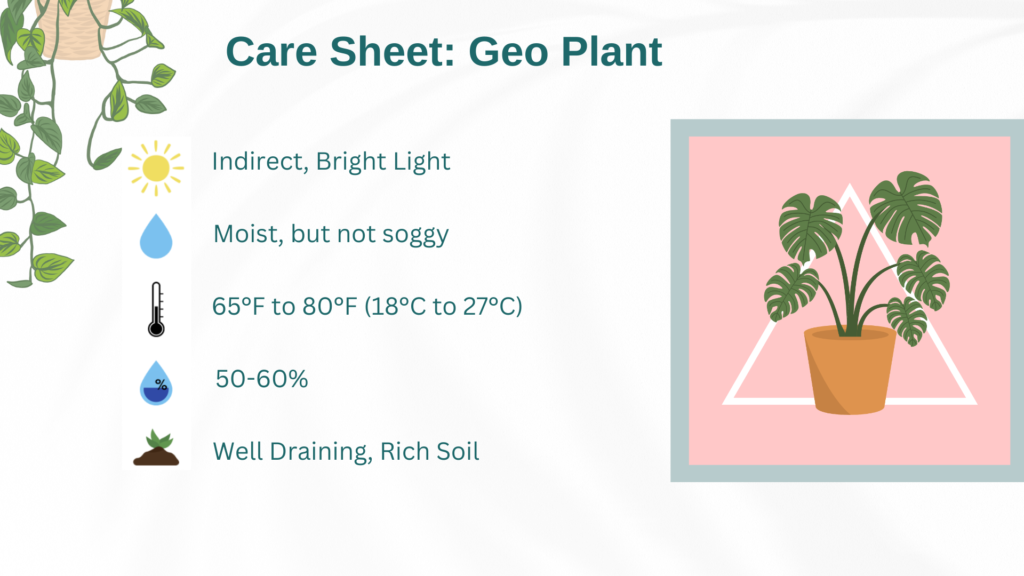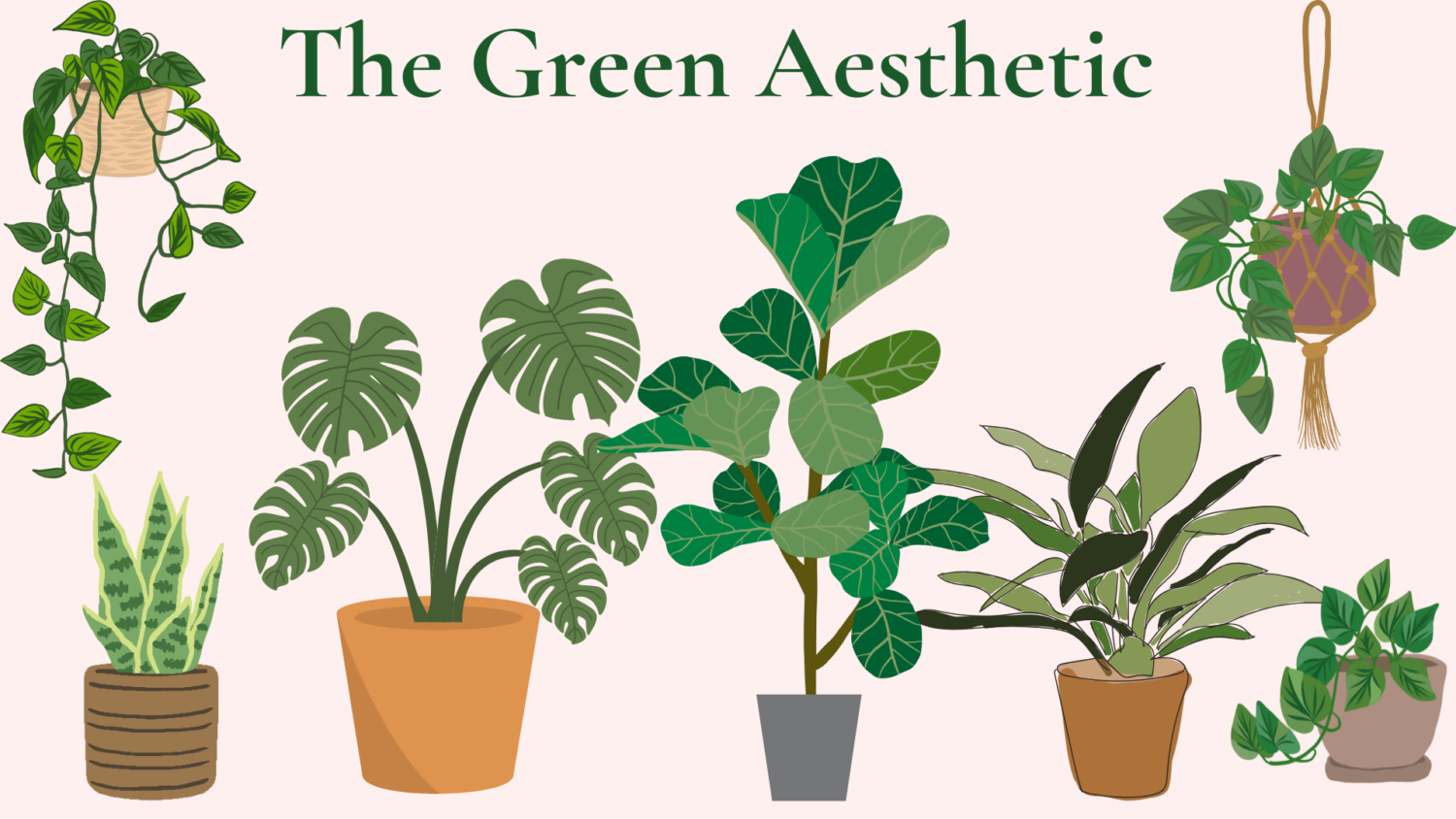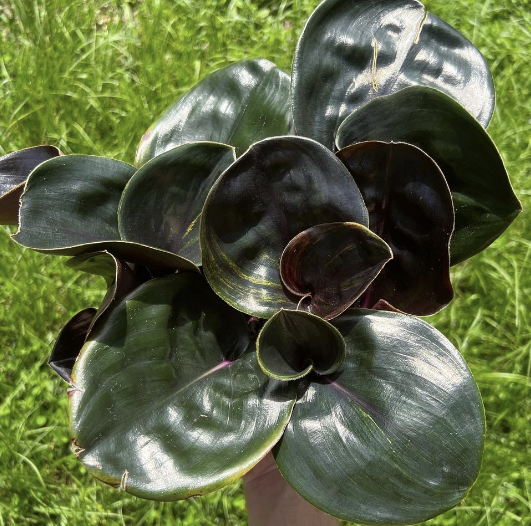If you’re searching for a houseplant that makes an instant statement, the Geo Plant (Geogenanthus ciliatus) is an excellent choice.
This relatively new houseplant is quickly gaining popularity for its shiny purple-black leaves, which add a bold and dramatic touch to any indoor space. With its compact size and exotic look, it’s the perfect foliage plant for small areas or as a standout piece in your collection.
Native to the rainforests of South America, the Geo Plant thrives in humid environments like kitchens or bathrooms, and it’s also well-suited for terrariums.
Its adaptability to low to medium light makes it easy to care for, even in spaces without bright windows.
Whether you’re a beginner or an experienced plant enthusiast, the Geo Plant’s unique beauty and easy maintenance make it a fantastic addition to your indoor garden.
How to Identify a Geo Plant
The Geo Plant stands out thanks to its light green leaves with darker green veins that create a mosaic or lattice pattern. The leaves are broad, oval-shaped, and have a slightly glossy finish. This plant is part of the Marantaceae family, also known as the prayer plant family, which means its leaves move up and down slightly with the light cycle—yes, it’s alive and interactive!
Size
The Geo Plant is relatively compact, making it perfect for tabletops or as part of a larger plant display.
- Height: It typically grows between 12 to 24 inches tall.
- Width: Its spread is about 12 to 18 inches, depending on how it’s cared for.
Care

Light Requirements
The Geo Plant thrives in bright, indirect light, but it’s pretty adaptable.
- Bright, indirect light: This is ideal for maintaining its vivid patterns and overall health.
- Low light: The Geo Plant can survive in lower light, but the patterns on its leaves may fade, and growth will slow.
- Direct sunlight: Avoid placing it in direct sun, as it can scorch the delicate leaves and cause discoloration.
Pro Tip: Place your Geo Plant near an east- or north-facing window for the perfect balance of light.
Watering Needs
Watering the Geo Plant can be a bit tricky, but with practice, you’ll get the hang of it. The key is to keep the soil slightly moist without letting it become soggy.
- Spring and Summer: Water once the top inch of soil feels dry. This might mean watering about once a week, but always check the soil first.
- Fall and Winter: Water less frequently, about every 10-14 days, as the plant’s growth slows down.
Pro Tip: Its a good idea to use filtered or distilled water, or let tap water sit out overnight before using. The Geo Plant is sensitive to chemicals like chlorine and fluoride found in tap water.
Temperature and Humidity
The Geo Plant loves warm, humid environments—basically, it thrives in tropical conditions.
- Temperature: Keep it between 65°F and 80°F. Avoid cold drafts or placing it near heating vents.
- Humidity: High humidity is a must. Aim for at least 50-60% humidity or more.
Pro Tip: If your home is dry, use a humidifier, mist the plant occasionally, or place it on a pebble tray filled with water.
Soil Requirements
The Geo Plant needs well-draining, rich soil to thrive. A standard potting mix with added peat moss and perlite works well. The peat moss retains some moisture while the perlite ensures good drainage, which is the perfect combination for this plant.
Fertilizer
Feed your Geo Plant during its growing season to keep it healthy and vibrant.
- Spring and Summer: This plant doesn’t need much fertilizer. Use a balanced, diluted fertilizer (like 10-10-10) once a month.
- Fall and Winter: Skip fertilizing, as the plant doesn’t need extra nutrients during its dormant phase.
Pro Tip: Over-fertilizing can cause leaf burn. Always dilute the fertilizer to half-strength.
Potting
Choose a pot with drainage holes to prevent water from sitting in the bottom. Repot your Geo Plant every 2-3 years or when it becomes root-bound.
It can also be placed in a large terrarium, provided you create the right environment for it.
Pro Tip: When repotting, only move up one pot size to avoid overwatering issues.
Pruning
Pruning isn’t necessary for this plant, but you can remove any yellow or damaged leaves to keep it looking its best. Use clean, sharp scissors to avoid spreading bacteria or fungi.
Propagation
The easiest way to propagate the Geo Plant is by division.
- Wait until the plant is mature and has several healthy stems.
- Gently remove it from the pot and separate the root clumps into smaller sections.
- Replant the divisions in fresh soil and water lightly.
Propagation works best in spring or early summer when the plant is actively growing.
Pests
The Geo Plant is generally pest-resistant but can occasionally attract common houseplant pests:
- Spider Mites: Tiny pests that create webbing and suck sap from the leaves. Wipe them off with a damp cloth and spray with insecticidal soap.
- Mealybugs: These appear as white, cottony masses on leaves and stems. Remove them with a cotton swab dipped in rubbing alcohol.
- Fungus Gnats: Overwatering can lead to fungus gnats. Let the soil dry out and use sticky traps to catch them.
Pro Tip: Regularly inspect your plant and clean its leaves to prevent infestations.
Diseases
The most common issue for Geo Plants is root rot, caused by overwatering or poor drainage.
- Root Rot: Yellowing leaves and a foul odor from the soil are signs. Repot the plant in fresh, dry soil and remove any mushy roots.
- Leaf Spot: Brown or yellow spots can develop from overwatering or fungal infections. Improve air circulation and avoid wetting the leaves.
Is It Toxic?
The Geo Plant is non-toxic, which makes it safe for households with pets or kids. You can enjoy its beauty without worrying about accidental ingestion.
Common Issues
Here are some common problems and how to fix them:
- Yellowing Leaves: This usually means overwatering. Let the soil dry out and adjust your watering schedule.
- Browning Edges: Low humidity or chemical buildup from tap water is often the cause. Increase humidity and switch to filtered water.
- Faded Patterns: This happens when the plant isn’t getting enough light. Move it to a brighter spot with indirect sunlight.
Difficulty Level
The Geo Plant is moderately easy to care for, but it does require some attention to its humidity and watering needs. If you’re willing to put in a little extra effort, it’s a rewarding plant that will thrive in your home.
Final Thoughts
The Geo Plant is a showstopper that brings a touch of elegance and nature into your home. With its intricate patterns, manageable size, and air-purifying qualities, it’s a fantastic choice for plant lovers. Just remember to provide plenty of humidity, avoid overwatering, and give it the right amount of indirect light to keep it happy. Whether you’re a beginner or a seasoned plant parent, the Geo Plant is a stunning addition to any indoor garden.

